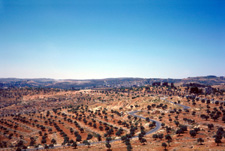|
Region in southern
Palestine.
|
Judea
gets its name from the tribe of Judah, which settled
in southern Palestine. When the kingdom split
into north and south in 922 B.C., the northern
half was called Israel and the southern part was
called Judah. The kingdom
of Judah fell to the Babylonians in 587 B.C. Afterward,
the region became known as Judea and its people
as Judeans or Jews (Ezra 5:8). Jerusalem remained its principal
city. Judea became part of the Persian and Greek
empires before achieving independence under the
Maccabees in the second century B.C. In New Testament
times, Judea was a Roman province that was ruled
by Herod the Great
(37-4 B.C.) and later by Roman governors. During
Jesus' adult life the governor was Pontius
Pilate.
 |
Central Judea south
of Jerusalem |
Jesus was born in Bethlehem of Judea, but
later lived in Nazareth in Galilee.
John's gospel relates that Jesus came to Judea
repeatedly during his ministry. He frequently
taught in the Temple and performed healings in
Jerusalem and the nearby village of Bethany. The
other three gospels suggest that Jesus made one
trip to Jerusalem at the end of his ministry.
After Jesus' death and resurrection his disciples
remained active in Judea, and the number of Christians
in the region grew (Acts 1:8; 26:20; Gal 1:22).
Non-Christians in Judea were sometimes hostile
to the church there (1 Thess 2:14; Rom 15:31).
|